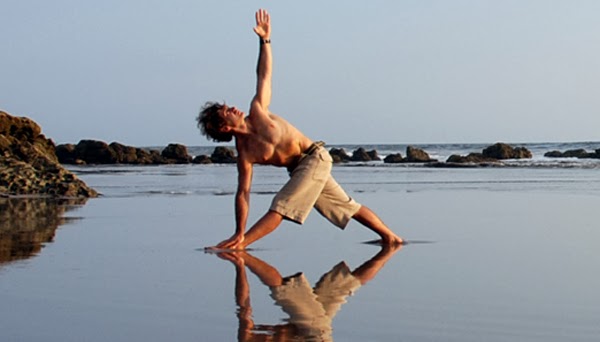 |
| "Dark Rudra" original on canvas and paper, Norman Sjoman |
I t happened the usual way things happen for me. I read something curious and then the thought of it grew, generating questions that then fractured and multiplied, interrupting my routines, populating my peripheral vision. I owe this particularly pleasant detour to Canadian painter, writer, yoga teacher and Sanskritist
Norman Sjoman who I’m told was living in Argentina at the time I managed to make contact with him. See, I was on a mission to sequester myself (very successful on the isolation end of things) with the books I needed to read for my final comprehensive exam when I re-read Sjoman’s lovely book,
The Yoga Tradition of the Mysore Palace, in which he wrote the following:
"I feel that the only possible way of communicating any meaningful sense of justice is through one's personal sense of order, one's aesthetic."
So of course, this seemed an unusual pronouncement to make. I mean, not that the statement itself is hard to understand, but that Sjoman had decided to open his discussion of the hatha yoga traditions of the Mysore Palace with this note to his readers seemed out of the ordinary. What was his concern with the aesthetic?
 |
| Norman Sjoman |
Norman Sjoman has published on art, art history and the techniques of yoga, and also lectured on these subjects as well as Sanskrit at universities in various countries. Born in Mission City, British Columbia, Sjoman has a BA Honours from the University of British Columbia, a Filosofie Kandidat from Stockholm University.
He has a Vidyāvācaspati (PhD) from the Centre of Advanced Studies in Sanskrit at Pune University, a pandit degree from the Mysore Maharaja’s Mahapathasala and a Diploma from Alberta College of Art. Over a 14-year period in India he studied four different śāstras (traditional philosophical disciplines), in Sanskrit, with several individual pandits. From 1970-1976 Sjoman studied yoga under B.K.S. Iyengar. Sjoman has taught yoga in several countries and is accredited by yoga studios in Canada, the Netherlands and Japan. In 1982 he was awarded an honorary Doctorate in Yoga by the Nippon Yoga Gakkei. At present he resides mainly in Calgary, Canada, while making frequent visits to India,
 |
| "Harihara," original on canvas/paper, Norman Sjoman |
Europe, Mexico and South America. As a visual artist, Sjoman has illustrated his own books and books by others. He has prepared exhibition catalogues for various artists, including Druvinka, Shehan Madawela, Raghupati Bhatta, and R. Puttaraju. In 2006 Sjoman was invited to the first panel on yoga at the American Academy of Religion in Washington, DC, where he presented a paper entitled Summary of Research on Yoga. In 2006 he presented a monograph "The Yoga Tradition" at India's Lonavla Yoga Institute.
I like to think that like all detours from life’s main roads, this conversation (which is the result of a volley back and forth of questions emailed over great distances) gives you a sense of yoga’s tributaries and alleyways as Sjoman discusses art, poetry and the body in motion...all those things that make the busy pace of the main road that much more bearable. And so using something other than straight lines we build relationships that can sustain more than plans and ambitions: a personal sense of order, a treehouse, an āsana, a fable that happened one day in the backyard.
 |
| "Rudra Rajata" original mixed media on canvas, Norman Sjoman |





























